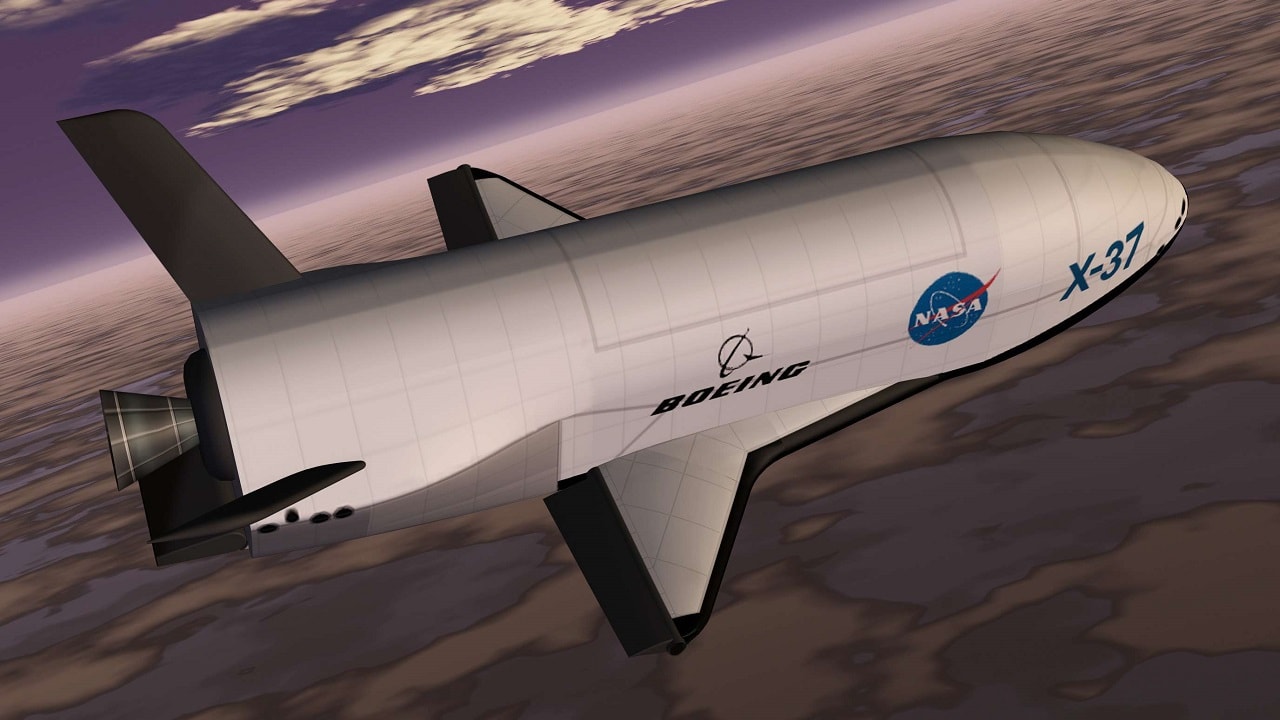X-37B – The U.S. Space Plane Keeps Observers Guessing: At first glance, you think you are looking at a miniature version of the space shuttle, but the X-37B is an unmanned and autonomous space plane with its own quirks and characteristics. The craft is also known as the Orbital Test Vehicle, and it has flown six missions since 2010. At only 29-feet long, the X-37B is just a fraction of the size of the space shuttle. It’s also boosted into space on a rocket, and it lands horizontally like an airplane. Let’s take a look at just why the United States needs such a curious spacecraft.
What Is It Doing In Space?
Most missions and their details are classified. Could it be used to take out enemy satellites? That question has been bandied about by space war analysts. But the U.S. military denies such offensive activities and claims the X-37B is for peaceful purposes as a technology and scientific testbed. For example, it could be trying out new tech for spy satellites and other types of orbiting vehicles. The X-37B could also be gathering data on vertical launch mechanisms for flight control and testing other space components.
Some Mission Details Are Emerging
The U.S. government has allowed some mission characteristics to be in the public domain. Before it got turned over to the Space Force, the Air Force in 2020 described a smorgasbord of activities that the X-37B embarks upon. This list is impressive, even though the craft’s payload is small.
It investigates “advanced guidance, navigation and control, thermal protection systems, avionics, high-temperature structures and seals, conformal reusable insulation, lightweight electromechanical flight systems, advanced propulsion systems, advanced materials, and autonomous orbital flight, reentry and landing.”
This makes the X-37B a valuable spacecraft, so look for more missions and longer orbits for the 9.5-feet tall vehicle. It will likely continue to launch on the Atlas V (501) and SpaceX Falcon 9 rockets.
X-37B: History of the Program
The X-37 began its journey to production in 1999 and NASA oversaw the project. Then it got transferred to the secretive military think tank Defense Advanced Research Projects Agency (DARPA) in 2004. Boeing was a partner as well and the defense contractor reportedly built two X-37Bs. The Air Force served as the program coordinator and then the X-37B became the property of the U.S. Space Force.
What’s remarkable about the small craft is that it stays in orbit (between 150 and 500 miles above the earth) for a surprisingly long time. One mission lasted 718 days in 2017. Then a fifth mission completed 780 days in space.
U.S. Rivals Are Being Driven “Nuts”
U.S. rivals such as China and Russia are flummoxed as to what the X-37B may be up to in the heavens. In 2019, Air Force Secretary Heather Wilson said at the Aspen Security Forum that it could alter its orbit. “Our adversaries don’t know (its orbit) – and that happens on the far side of the Earth from our adversaries – where it’s going to come up next. And we know that that drives them nuts. And I’m really glad about that.”
Each X-37B mission costs around $200 million. That’s not a bad price considering it stays up so long in orbit, is reusable and unmanned, and conducts such vital tests and experimentation. So let China and Russia think it is up to military missions like transporting killer satellite munitions. The U.S. Space Force is happy to run it as a science and tech demonstrator for research and development that helps other space missions succeed.
Now serving as 1945’s Defense and National Security Editor, Brent M. Eastwood, PhD, is the author of Humans, Machines, and Data: Future Trends in Warfare. He is an Emerging Threats expert and former U.S. Army Infantry officer. You can follow him on Twitter @BMEastwood.

